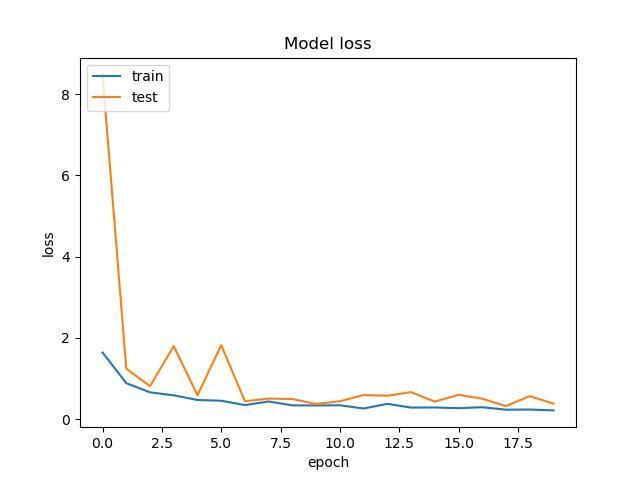ResNet实战:tensorflow2.X版本,ResNet50图像分类任务(大数据集)
Posted AI浩
tags:
篇首语:本文由小常识网(cha138.com)小编为大家整理,主要介绍了ResNet实战:tensorflow2.X版本,ResNet50图像分类任务(大数据集)相关的知识,希望对你有一定的参考价值。
ResNet实战:tensorflow2.X版本,ResNet50图像分类任务(大数据集)
摘要
本例提取了植物幼苗数据集中的部分数据做数据集,数据集共有12种类别,今天我和大家一起实现tensorflow2.X版本图像分类任务,分类的模型使用ResNet50。本文实现的算法有一下几个特点:
1、自定义了图片加载方式,更加灵活高效,不用将图片一次性加载到内存中,节省内存,适合大规模数据集。
2、加载模型的预训练权重,训练时间更短。
3、数据增强选用albumentations。
训练
第一步 导入需要的数据包,设置全局参数
import numpy as np
from tensorflow.keras.optimizers import Adam
import cv2
from tensorflow.keras.preprocessing.image import img_to_array
from sklearn.model_selection import train_test_split
from tensorflow.python.keras.callbacks import ModelCheckpoint, ReduceLROnPlateau
from tensorflow.keras.applications import ResNet50
import os
import tensorflow as tf
from tensorflow.python.keras.layers import Dense
from tensorflow.python.keras.models import Sequential
import albumentations
norm_size = 224
datapath = 'data/train'
EPOCHS = 20
INIT_LR = 3e-4
labelList = []
dicClass = 'Black-grass': 0, 'Charlock': 1, 'Cleavers': 2, 'Common Chickweed': 3, 'Common wheat': 4, 'Fat Hen': 5, 'Loose Silky-bent': 6,
'Maize': 7, 'Scentless Mayweed': 8, 'Shepherds Purse': 9, 'Small-flowered Cranesbill': 10, 'Sugar beet': 11
classnum = 12
batch_size = 4
np.random.seed(42)
这里可以看出tensorflow2.0以上的版本集成了Keras,我们在使用的时候就不必单独安装Keras了,以前的代码升级到tensorflow2.0以上的版本将keras前面加上tensorflow即可。
tensorflow说完了,再说明一下几个重要的全局参数:
-
norm_size = 224 设置输入图像的大小,ResNet50默认的图片尺寸是224×224。
-
datapath = ‘data/train’ 设置图片存放的路径,在这里要说明一下如果图片很多,一定不要放在工程目录下,否则Pycharm加载工程的时候会浏览所有的图片,很慢很慢。
-
EPOCHS = 20 epochs的数量,关于epoch的设置多少合适,这个问题很纠结,一般情况设置300足够了,如果感觉没有训练好,再载入模型训练。
-
INIT_LR = 1e-3 学习率,一般情况从0.001开始逐渐降低,也别太小了到1e-6就可以了。
-
classnum = 12 类别数量,数据集有两个类别,所有就分为两类。
-
batch_size = 4 batchsize,根据硬件的情况和数据集的大小设置,太小了loss浮动太大,太大了收敛不好,根据经验来,一般设置为2的次方。windows可以通过任务管理器查看显存的占用情况。

Ubuntu可以使用nvidia-smi查看显存的占用。

-
定义numpy.random的随机因子。这样就可以固定随机的index
第二步 加载图片
和以前做法不同的是,这里不再处理图片,而是只返回图片路径的list列表。
具体做法详见代码:
def loadImageData():
imageList = []
listClasses = os.listdir(datapath) # 类别文件夹
print(listClasses)
for class_name in listClasses:
label_id = dicClass[class_name]
class_path = os.path.join(datapath, class_name)
image_names = os.listdir(class_path)
for image_name in image_names:
image_full_path = os.path.join(class_path, image_name)
labelList.append(label_id)
imageList.append(image_full_path)
return imageList
print("开始加载数据")
imageArr = loadImageData()
labelList = np.array(labelList)
print("加载数据完成")
做好数据之后,我们需要切分训练集和测试集,一般按照4:1或者7:3的比例来切分。切分数据集使用train_test_split()方法,需要导入from sklearn.model_selection import train_test_split 包。例:
trainX, valX, trainY, valY = train_test_split(imageArr, labelList, test_size=0.2, random_state=42)
第三步 图像增强
train_transform = albumentations.Compose([
albumentations.OneOf([
albumentations.RandomGamma(gamma_limit=(60, 120), p=0.9),
albumentations.RandomBrightnessContrast(brightness_limit=0.2, contrast_limit=0.2, p=0.9),
albumentations.CLAHE(clip_limit=4.0, tile_grid_size=(4, 4), p=0.9),
]),
albumentations.HorizontalFlip(p=0.5),
albumentations.ShiftScaleRotate(shift_limit=0.2, scale_limit=0.2, rotate_limit=20,
interpolation=cv2.INTER_LINEAR, border_mode=cv2.BORDER_CONSTANT, p=1),
albumentations.Normalize(mean=(0.485, 0.456, 0.406), std=(0.229, 0.224, 0.225), max_pixel_value=255.0, p=1.0)
])
val_transform = albumentations.Compose([
albumentations.Normalize(mean=(0.485, 0.456, 0.406), std=(0.229, 0.224, 0.225), max_pixel_value=255.0, p=1.0)
])
这个随意写的,具体的设置可以参考我以前写的文章:
图像增强库Albumentations使用总结_AI浩-CSDN博客_albumentations
写了两个数据增强,一个是用于训练,一个用于验证。验证集只需要对图片做归一化处理。
第四步 定义图像处理的方法
generator的主要作用是处理图像,并迭代的方式返回一个batch的图像以及对应的label。
思路:
在while循环:
-
初始化input_samples和input_labels,连个list分别用来存放image和image对应的标签。
-
循环batch_size次数:
-
- 随机一个index
- 分别从file_pathList和labels,得到图片的路径和对应的label
- 读取图片
- 如果是训练就训练的transform,如果不是就执行验证的transform。
- resize图片
- 将image转数组
- 将图像和label分别放到input_samples和input_labels
-
将list转numpy数组。
-
返回一次迭代
def generator(file_pathList,labels,batch_size,train_action=False):
L = len(file_pathList)
while True:
input_labels = []
input_samples = []
for row in range(0, batch_size):
temp = np.random.randint(0, L)
X = file_pathList[temp]
Y = labels[temp]
image = cv2.imdecode(np.fromfile(X, dtype=np.uint8), -1)
if image.shape[2] > 3:
image = image[:, :, :3]
if train_action:
image=train_transform(image=image)['image']
else:
image = val_transform(image=image)['image']
image = cv2.resize(image, (norm_size, norm_size), interpolation=cv2.INTER_LANCZOS4)
image = img_to_array(image)
input_samples.append(image)
input_labels.append(Y)
batch_x = np.asarray(input_samples)
batch_y = np.asarray(input_labels)
yield (batch_x, batch_y)
第五步 保留最好的模型和动态设置学习率
ModelCheckpoint:用来保存成绩最好的模型。
语法如下:
keras.callbacks.ModelCheckpoint(filepath, monitor='val_loss', verbose=0, save_best_only=False, save_weights_only=False, mode='auto', period=1)
该回调函数将在每个epoch后保存模型到filepath
filepath可以是格式化的字符串,里面的占位符将会被epoch值和传入on_epoch_end的logs关键字所填入
例如,filepath若为weights.epoch:02d-val_loss:.2f.hdf5,则会生成对应epoch和验证集loss的多个文件。
参数
- filename:字符串,保存模型的路径
- monitor:需要监视的值
- verbose:信息展示模式,0或1
- save_best_only:当设置为True时,将只保存在验证集上性能最好的模型
- mode:‘auto’,‘min’,‘max’之一,在save_best_only=True时决定性能最佳模型的评判准则,例如,当监测值为val_acc时,模式应为max,当检测值为val_loss时,模式应为min。在auto模式下,评价准则由被监测值的名字自动推断。
- save_weights_only:若设置为True,则只保存模型权重,否则将保存整个模型(包括模型结构,配置信息等)
- period:CheckPoint之间的间隔的epoch数
ReduceLROnPlateau:当评价指标不在提升时,减少学习率,语法如下:
keras.callbacks.ReduceLROnPlateau(monitor='val_loss', factor=0.1, patience=10, verbose=0, mode='auto', epsilon=0.0001, cooldown=0, min_lr=0)
当学习停滞时,减少2倍或10倍的学习率常常能获得较好的效果。该回调函数检测指标的情况,如果在patience个epoch中看不到模型性能提升,则减少学习率
参数
- monitor:被监测的量
- factor:每次减少学习率的因子,学习率将以lr = lr*factor的形式被减少
- patience:当patience个epoch过去而模型性能不提升时,学习率减少的动作会被触发
- mode:‘auto’,‘min’,‘max’之一,在min模式下,如果检测值触发学习率减少。在max模式下,当检测值不再上升则触发学习率减少。
- epsilon:阈值,用来确定是否进入检测值的“平原区”
- cooldown:学习率减少后,会经过cooldown个epoch才重新进行正常操作
- min_lr:学习率的下限
本例代码如下:
checkpointer = ModelCheckpoint(filepath='best_model.hdf5',
monitor='val_accuracy', verbose=1, save_best_only=True, mode='max')
reduce = ReduceLROnPlateau(monitor='val_accuracy', patience=10,
verbose=1,
factor=0.5,
min_lr=1e-6)
第六步 建立模型并训练
model = Sequential()
model.add(ResNet50(include_top=False, pooling='avg', weights='imagenet'))
model.add(Dense(classnum, activation='softmax'))
optimizer = Adam(learning_rate=INIT_LR)
model.compile(optimizer=optimizer, loss='sparse_categorical_crossentropy', metrics=['accuracy'])
history = model.fit(generator(trainX,trainY,batch_size,train_action=True),
steps_per_epoch=len(trainX) / batch_size,
validation_data=generator(valX,valY,batch_size,train_action=False),
epochs=EPOCHS,
validation_steps=len(valX) / batch_size,
callbacks=[checkpointer, reduce])
model.save('my_model.h5')
print(history)
上篇博文中没有使用预训练模型,这篇在使用的时候,出现了错误,经过查阅资料发现了这种方式是错误的,如下:
#model = ResNet50(weights="imagenet",input_shape=(224,224,3),include_top=False, classes=classnum) #include_top=False 去掉最后的全连接层
如果想指定classes,有两个条件:include_top:True, weights:None。否则无法指定classes。
所以指定classes就不能用预训练了,所以采用另一种方式:
model = Sequential()
model.add(ResNet50(include_top=False, pooling='avg', weights='imagenet'))
model.add(Dense(classnum, activation='softmax'))
另外,上篇文章使用的是fit_generator,新版本中fit支持generator方式,所以改为fit。
第六步 保留训练结果,并将其生成图片
loss_trend_graph_path = r"WW_loss.jpg"
acc_trend_graph_path = r"WW_acc.jpg"
import matplotlib.pyplot as plt
print("Now,we start drawing the loss and acc trends graph...")
# summarize history for accuracy
fig = plt.figure(1)
plt.plot(history.history["accuracy"])
plt.plot(history.history["val_accuracy"])
plt.title("Model accuracy")
plt.ylabel("accuracy")
plt.xlabel("epoch")
plt.legend(["train", "test"], loc="upper left")
plt.savefig(acc_trend_graph_path)
plt.close(1)
# summarize history for loss
fig = plt.figure(2)
plt.plot(history.history["loss"])
plt.plot(history.history["val_loss"])
plt.title("Model loss")
plt.ylabel("loss")
plt.xlabel("epoch")
plt.legend(["train", "test"], loc="upper left")
plt.savefig(loss_trend_graph_path)
plt.close(2)
print("We are done, everything seems OK...")
# #windows系统设置10关机
#os.system("shutdown -s -t 10")


测试部分
单张图片预测
1、导入依赖
import cv2
import numpy as np
from tensorflow.keras.preprocessing.image import img_to_array
from tensorflow.keras.models import load_model
import time
import os
import albumentations
2、设置全局参数
这里注意,字典的顺序和训练时的顺序保持一致
norm_size=224
imagelist=[]
emotion_labels =
0: 'Black-grass',
1: 'Charlock',
2: 'Cleavers',
3: 'Common Chickweed',
4: 'Common wheat',
5: 'Fat Hen',
6: 'Loose Silky-bent',
7: 'Maize',
8: 'Scentless Mayweed',
9: 'Shepherds Purse',
10: 'Small-flowered Cranesbill',
11: 'Sugar beet',
3、设置图片归一化参数
归一化参数的设置和验证的参数保持一致
val_transform = albumentations.Compose([
albumentations.Normalize(mean=(0.485, 0.456, 0.406), std=(0.229, 0.224, 0.225), max_pixel_value=255.0, p=1.0)
])
3、加载模型
emotion_classifier=load_model("my_model.h5")
4、处理图片
处理图片的逻辑和训练集也类似,步骤:
- 读取图片
- 将图片resize为norm_size×norm_size大小。
- 将图片转为数组。
- 放到imagelist中。
- 将list转为numpy数组。
image = cv2.imdecode(np.fromfile('data/test/0a64e3e6c.png', dtype=np.uint8), -1)
image = val_transform(image=image)['image']
image = cv2.resize(image, (norm_size, norm_size), interpolation=cv2.INTER_LANCZOS4)
image = img_to_array(image)
imagelist.append(image)
imageList = np.array(imagelist, dtype="float")
5、预测类别
预测类别,并获取最高类别的index。
pre=np.argmax(emotion_classifier.predict(imageList))
emotion = emotion_labels[pre]
t2=time.time()
print(emotion)
t3=t2-t1
print(t3)
批量预测
批量预测和单张预测的差别主要在读取数据上,以及预测完成后,对预测类别的处理。其他的没有变化。
步骤:
- 加载模型。
- 定义测试集的目录
- 获取目录下的图片
- 循环循环图片
- 读取图片
- 对图片做归一化处理。
- resize图片
- 转数组
- 放到imageList中
- 预测
predict_dir = 'data/test'
test11 = os.listdir(predict_dir)
for file in test11:
filepath=os.path.join(predict_dir,file)
image = cv2.imdecode(np.fromfile(filepath, dtype=np.uint8), -1)
image = val_transform(image=image)['image']
image = cv2.resize(image, (norm_size, norm_size), interpolation=cv2.INTER_LANCZOS4)
image = img_to_array(image)
imagelist.append(image)
imageList = np.array(imagelist, dtype="float")
out = emotion_classifier.predict(imageList)
print(out)
pre = [np.argmax(i) for i in out]
class_name_list=[emotion_labels[i] for i in pre]
print(class_name_list)
t2 = time.time()
t3 = t2 - t1
print(t3)
完整代码:
https://download.csdn.net/download/hhhhhhhhhhwwwwwwwwww/77341117
以上是关于ResNet实战:tensorflow2.X版本,ResNet50图像分类任务(大数据集)的主要内容,如果未能解决你的问题,请参考以下文章